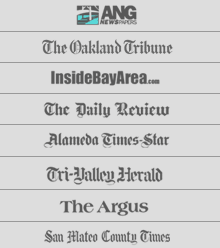|
|
|
|
|
|
|
|
|
|
|
|
|
|
 |
 |
|
| Cheryl North :: Reviews | ||
|
California Symphony Opening Concert of the 2010-2011 Season Review of the October 3, 2010 performance, published on websites and newspapers of the Bay Area News Group. By Cheryl North The "hottest seat" in the Bay Area last Sunday was not a seat, but a podium in the Lesher Center for the Arts in Walnut Creek. Asher Raboy, the guest conductor for the California Symphony's concert opening its 24th Season, was the guy likely to take the heat. But it was Michael Soza, the President of the California Symphony's Board of Directors who had to face up to the boos and catcalls that boomed out over the applause as he stepped to the podium to deliver greetings to open the symphony season and introduce Raboy. Raboy deftly deflected any continuing ruckus with his opening suggestion that the concert should begin with a hearty round of applause acknowledging the 24 years of excellent work by Maestro Barry Jekowsky, the California Symphony's founder and music director recently ousted by a minority of the organization's 20-member Board of Directors. After leading the vigorous applause himself, Raboy turned to cue the orchestra in the opening strains of The Star-Spangled Banner in what turned out to be a morbidly slow rendition. Both the mood and the music brightened up from that point. After stating that the program, "A Tribute to the WPA at 75," was planned by Jekowsky, Raboy led the orchestra through an effervescent performance of the Overture to Strauss's opera, Die Fledermaus, followed by Aaron Copland's Quiet City, Ernst Bacon's Remembering Ansel Adams, Copland's whimsical John Henry, and a somewhat pedantic interpretation of Beethoven's Symphony No. 7. For those of us who were not yet born in 1935, that was the year when the WPA, the Works Progress Administration, was first instituted. Endowed with an initial appropriation of nearly 5 billion dollars by the Federal Government, the WPA was geared to stave off the unemployment and slumping business effects of the Great Depression. The program has since been credited with "pump-priming" the economy and inaugurating lasting reforms that the states had been unable to subsidize. Raboy noted that more than 6,000 new art works (literature, art, music, drama, etc.) were produced under the program, including support for two of the concert's featured composers. Inexplicably, the accompanying exhibition of WPA art works set up in the Lesher Center's Bedford Art Gallery, was locked up for the day just three minutes before the concert intermission. The afternoon's most thrilling revelation was the music of Ernst Bacon, 1898-1990. An astonishingly prolific composer as well as a pedagogue, painter and writer, much of his work went on right under our noses here in the Bay Area. Son of an American doctor and an Austrian mother, he studied for a time in Vienna. Although moved by the music of the darkly depressed European avant-garde of the times, he returned to America and began composing music that brimmed with the vitality and optimism of the American spirit. Raboy noted that, even though Bacon composed a number of symphonies, piano concertos, chamber music, ballets, and more than 250 art songs in the spirit of Schubert and Schumann, "he is almost unknown today." During his long life time, Bacon taught at both the Eastman School of Music in New York and the San Francisco Conservatory of Music, founded and conducted the Carmel Bach Festival, was supervisor of the WPA Federal Music Project in San Francisco and conductor of its orchestra and finally, took up residence in Orinda. "Instead of promoting himself and his work, he was probably out hiking with his good friend (and renowned nature photographer) Ansel Adams," according to Raboy. Remembering Ansel Adams, while definitely elegiac, was animated with something like a 20th century version of the 18th century Antonio Vivaldi's musical "scene-painting." It was hard not to "see" rippling cataracts amid streams and rivers or vast open deserts under lonely mountain peaks looming under the gaze of a luminous moon as the orchestra coursed its way through the piece. Orchestral principals Mark Shannon, clarinet, and Leighton Fong, cellist, performed hauntingly beautiful song-like solos, while the piece ended with suggestions of a slowing heart beat emanating from the orchestra's percussion section. Another beautiful vignette composed by a recipient of WPA encouragement, Aaron Copland's Quiet City, provided more of the afternoon's unabashed beauty - and in the case of his John Henry, rustic fun. Quiet City was originally intended to accompany a play. While the play closed after just two performances, Copland's music endured after he re-crafted it into a concerto-like work for English horn, trumpet and orchestra. Laura Reynolds, the orchestra's principal oboist (playing an English Horn), and William Harvey, its principal trumpet, were polished and well-practiced as they presented silky, elegantly phrased dialogue passages between each other and with the orchestra. Although a paean to America's vast openness, it is clouded over by the stoic sobriety prevalent during of the Great Depression, with nary a suggestion of the brashness and merriment of the madcap jazz, pop, and ragtime of the 1920s. Which leaves me with the Beethoven. Alas. All the notes were indeed there, but they were performed mechanically and rote-like, giving the piece the character of a careful recitation rather than whole phrases presenting whole meaningful ideas. I suspect that being the most familiar work on the program to both conductor and musicians, it received the least rehearsal time.
|

|